Dr Jessica Studer was the Swiss ESA-sponsored medical doctor of DC20, the twentieth crew to spend a winter at Concordia research station, which lies on the Dome C plateau of Antarctica. Jessica spent 13 months, from November 2023 to December 2024, doing biomedical research in Concordia, a place more remote than the International Space Station.
Some say that leaving Concordia is just as much of a challenge as arriving, if not more. Arriving means stepping into the unknown, preparing yourself mentally and physically for isolation and extreme conditions. But leaving means saying goodbye to the place that became your world, the people who became your family, and the rhythm of life you’ve adapted to over months of solitude and shared hardship. It means re-adjusting to a world that seems to race ahead at nearly the speed of light; a world where maybe some of us have changed while everything else hasn’t; a world where the challenge will be to find our place back.
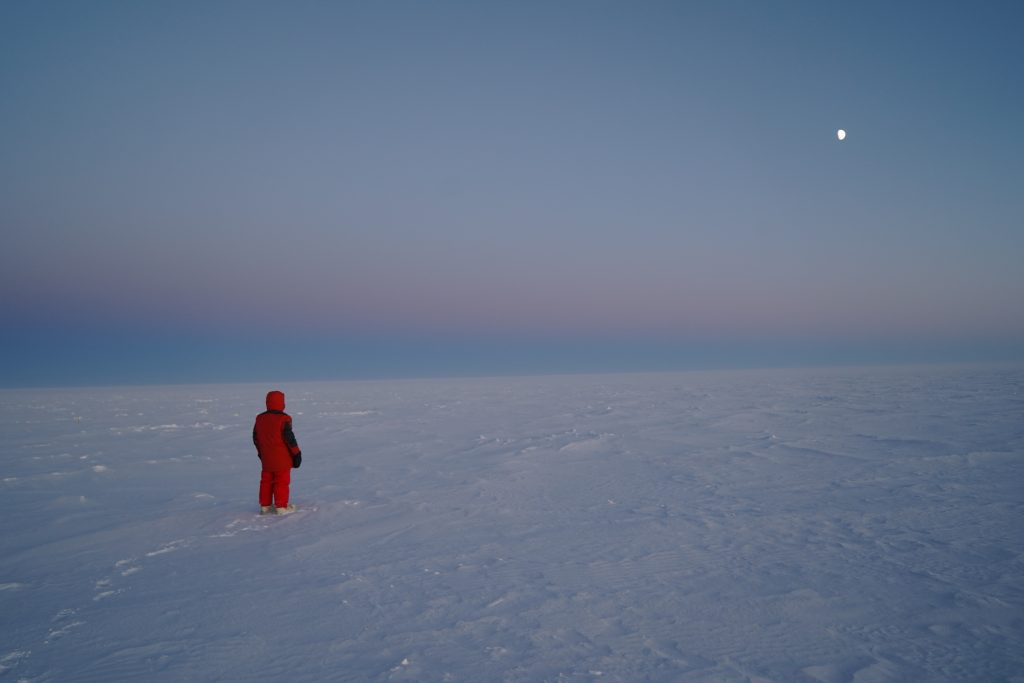
Mid-November 2024, we left our planet “white Mars”: Concordia station.
A dream became reality, yet waking from it is part of our journey. Boarding the plane, we look back at the station with both a happy and a heavy heart: happy to soon be reunited with family, loved ones and friends who had waited so long, but sad to leave our home — and our crew.
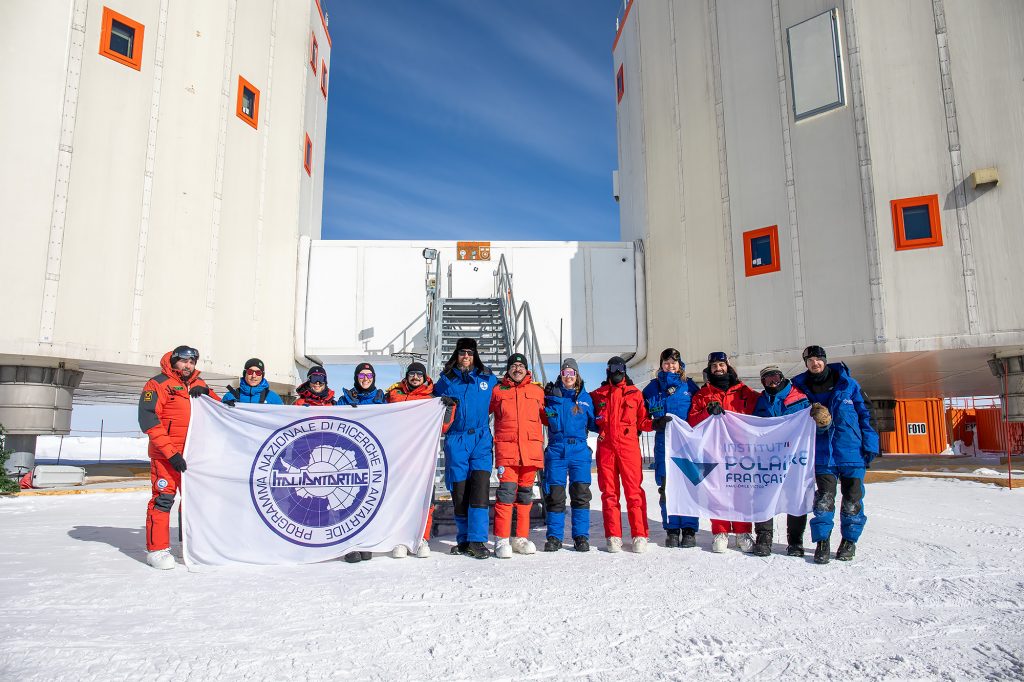
Tears fell as we hear the motor of the Basler DC-3 start, seeing Crew DC21 waving through the airplane window, and seeing our station from above, one last time.
No words needed — complete silence.
Our journey back took us to Dumont d’Urville, the French coastal station in Antarctica. Through the small window of the helicopter, we caught sight of the raw untamed beauty of this continent, and for the first time in a year, we saw not only endless ice, but… water.
Overwhelmed — that’s the first word that comes to mind.

A strange smell reached our noses, colors blinded our eyes — blue, black, grey, red — and sounds: penguin calls, helicopter motors, human talks filled our ears. All over the rocks, we could see small black dots – penguin colonies! What a blast! Caught in a rush of senses, colors, sounds, scent, and touch, we truly felt fully alive.
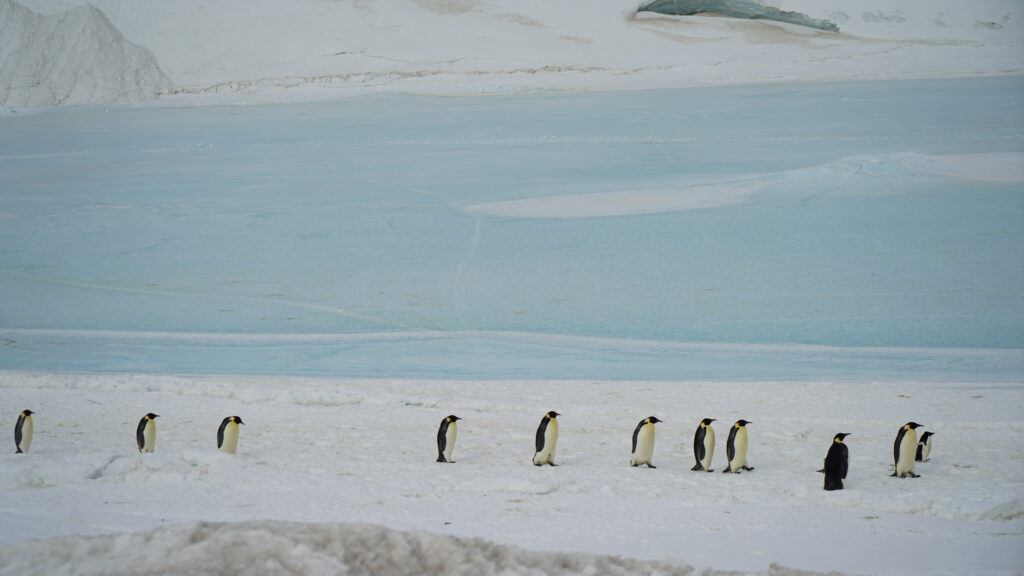
When people picture Antarctica, they likely imagine a place like Dumont d’Urville: massive blocks of ice, a breathtaking panorama of the Southern Ocean, emperor penguins marching to the coast to fish, Adélie penguins searching for the perfect pebble to build their nests.
And in the middle of it all, a red dot floating on the ocean, our way back home, the icebreaker that will bring us back to reality: the Astrolabe.
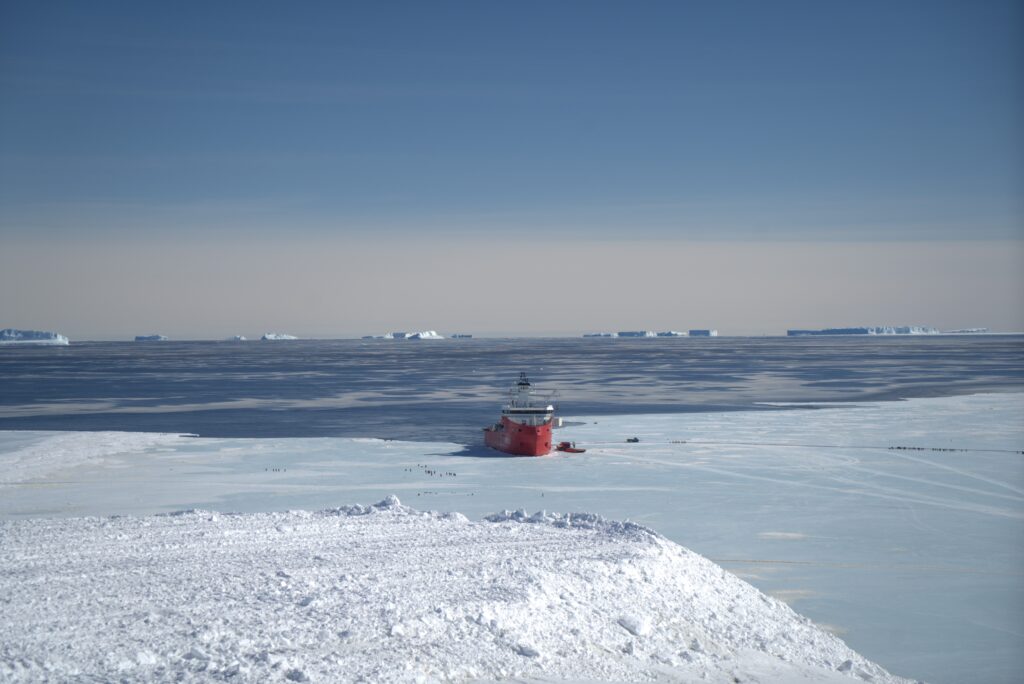
Also known affectionately (or not) as the Gastrolabe, the Astrolabe lives up to its nickname — not for exploring stars, but for stirring stomachs.
Once we broke free from the pack ice, very few of us escaped the journey without retreating to our cabins, becoming well-acquainted with the joys of gastrointestinal gymnastics.
Let’s just say: it was less of a picturesque voyage, and more of a digestive endurance test.
Between spotting whales, seals, and penguins, our days were filled with long naps, card games, and philosophical reflections — part of us still in Antarctica, part of us already preparing for what lay ahead. Then, after eight days at sea, we saw it! A tart scent in the nose, green landscape on the horizon… land in sight!
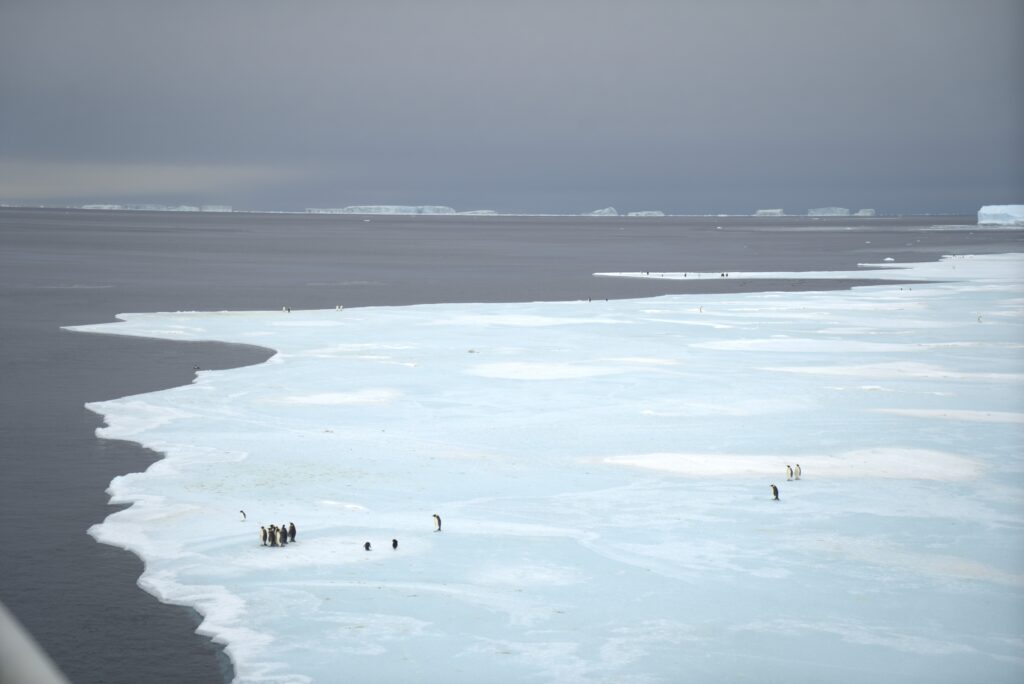
Our journey on the icebreaker ended, and the arrival in Hobart, Tasmania, marked the official end of our mission.
After so many months dreaming of fresh food and nature, we had finally made it.
While our minds were still processing the shift, our senses were already fully immersed.
And what better way to celebrate than with a first beer, and a plate of fresh vegetables and fruit in a local restaurant — surrounded by trees dancing in the wind, the sun warming our skin.
Hobart — a place of wanderers. People arriving, people leaving, each of them with their own story to tell. The end and beginning of so many missions.
The place where our crew mission ended and our personal story began.
The place where we said goodbye, a goodbye that holds a promise of return.
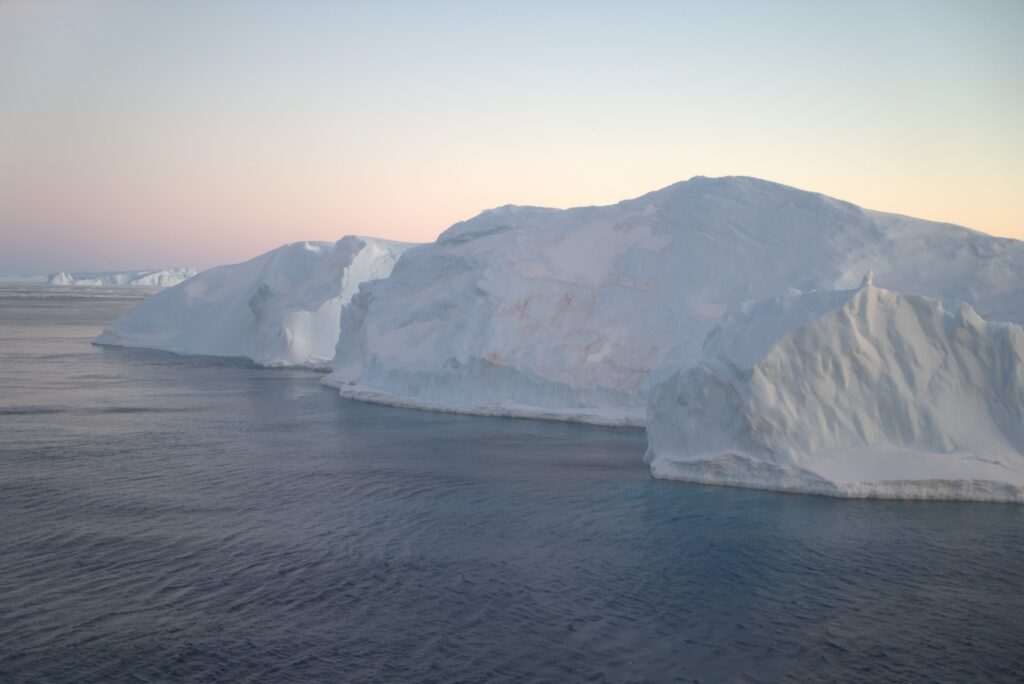
Goodbye to a year full of challenges, joy, laughter, hard work, and tears.
A year that forced us to confront ourselves, face our fears, and push past our limits.
As Antoine de Saint-Exupéry once said:
“C’est dans la contrainte que naît la liberté.”
“Freedom is born of constraint.”
That, for me, is the paradox of extreme environments: a place where constraint gives rise to a new kind of freedom.
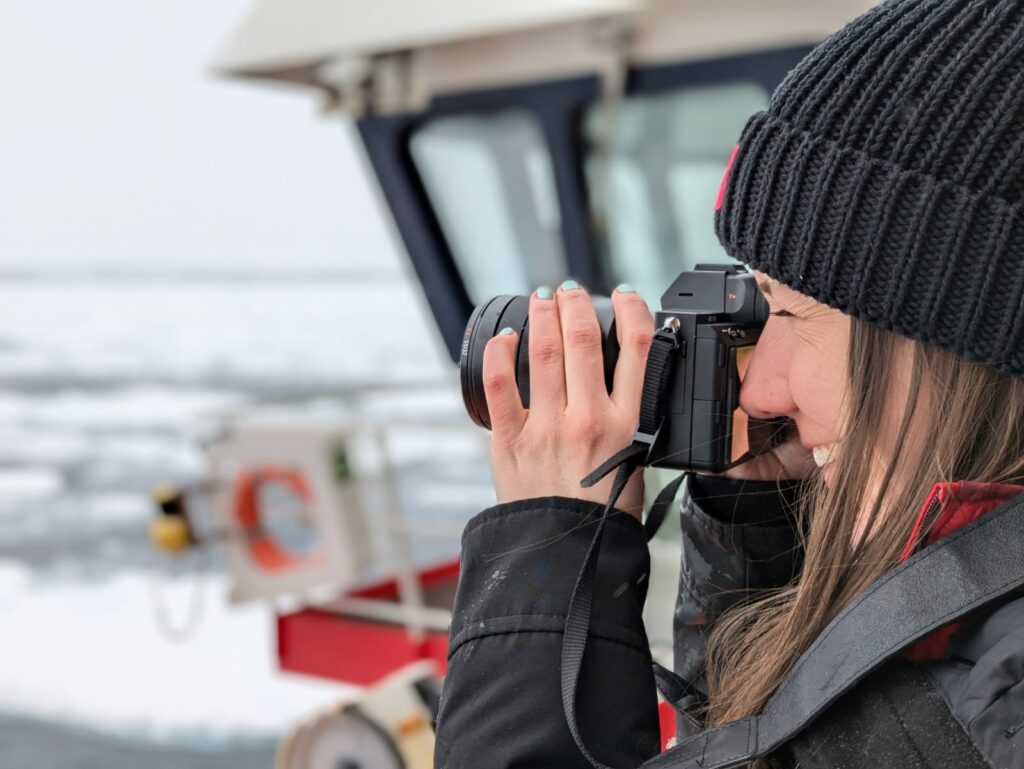
A final message from white Mars for all wanderers out there: sometimes, we need limits; sometimes, constraint is necessary — to grow as humans, and ultimately, to advance humanity — whether it is in space or here on Earth.
With that, we hope to catch you on another adventure. For now:
“DC 20 Mission complete. Best of luck to DC21 and the new medical officer, Nina Purvis. Signing off. Over and out.”
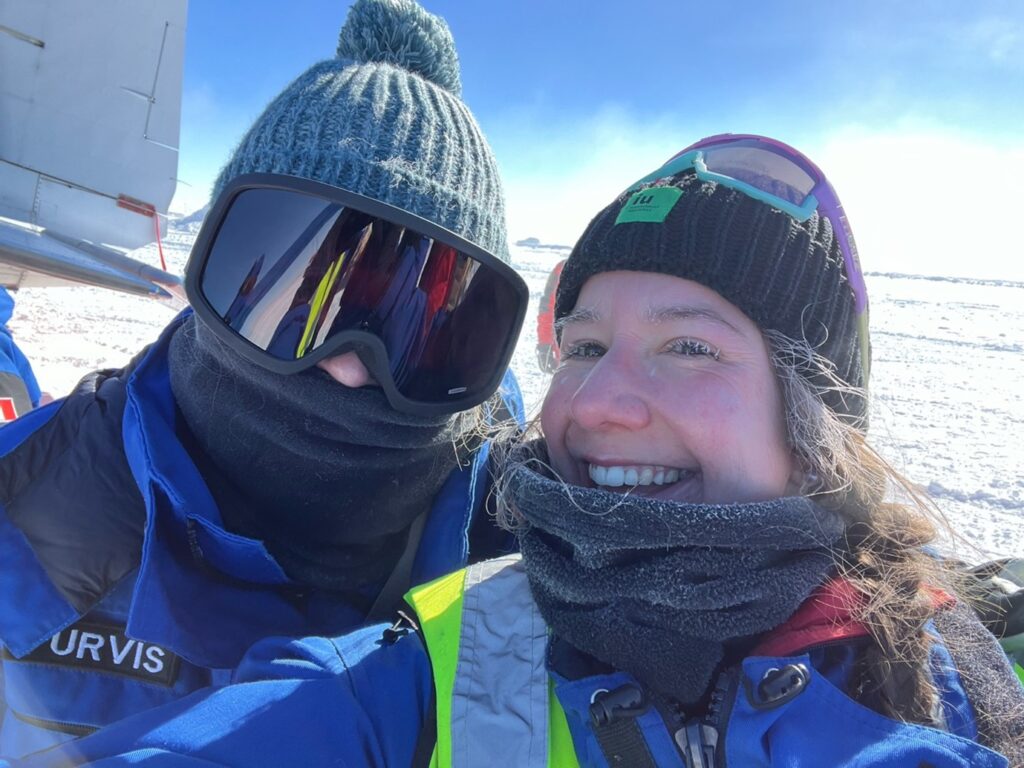
Nina Purvis is now the ESA-sponsored medical doctor at Concordia station – stay tuned to hear more about her adventures!



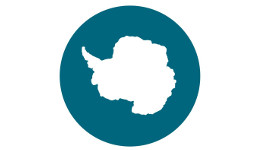
Discussion: no comments